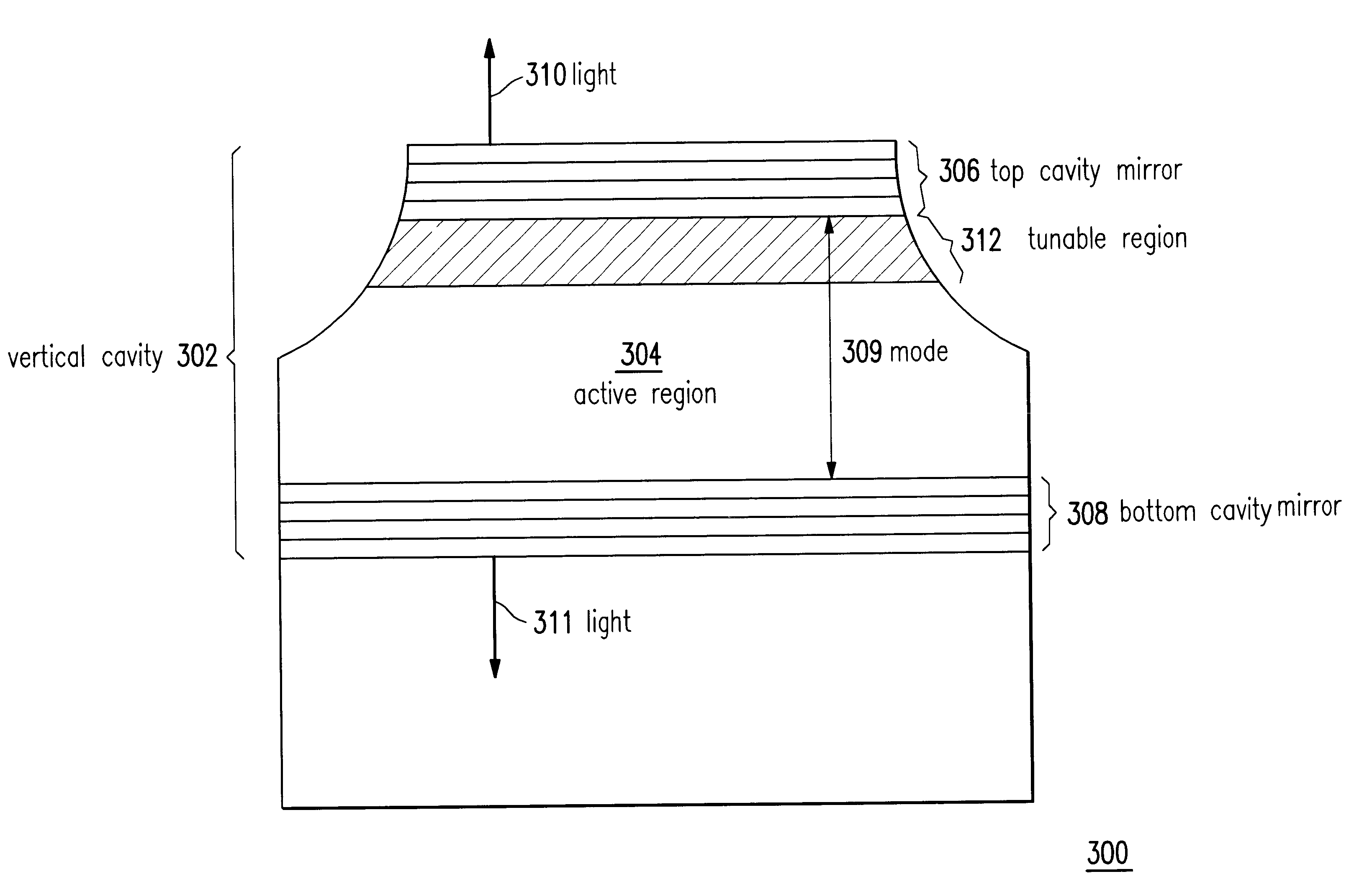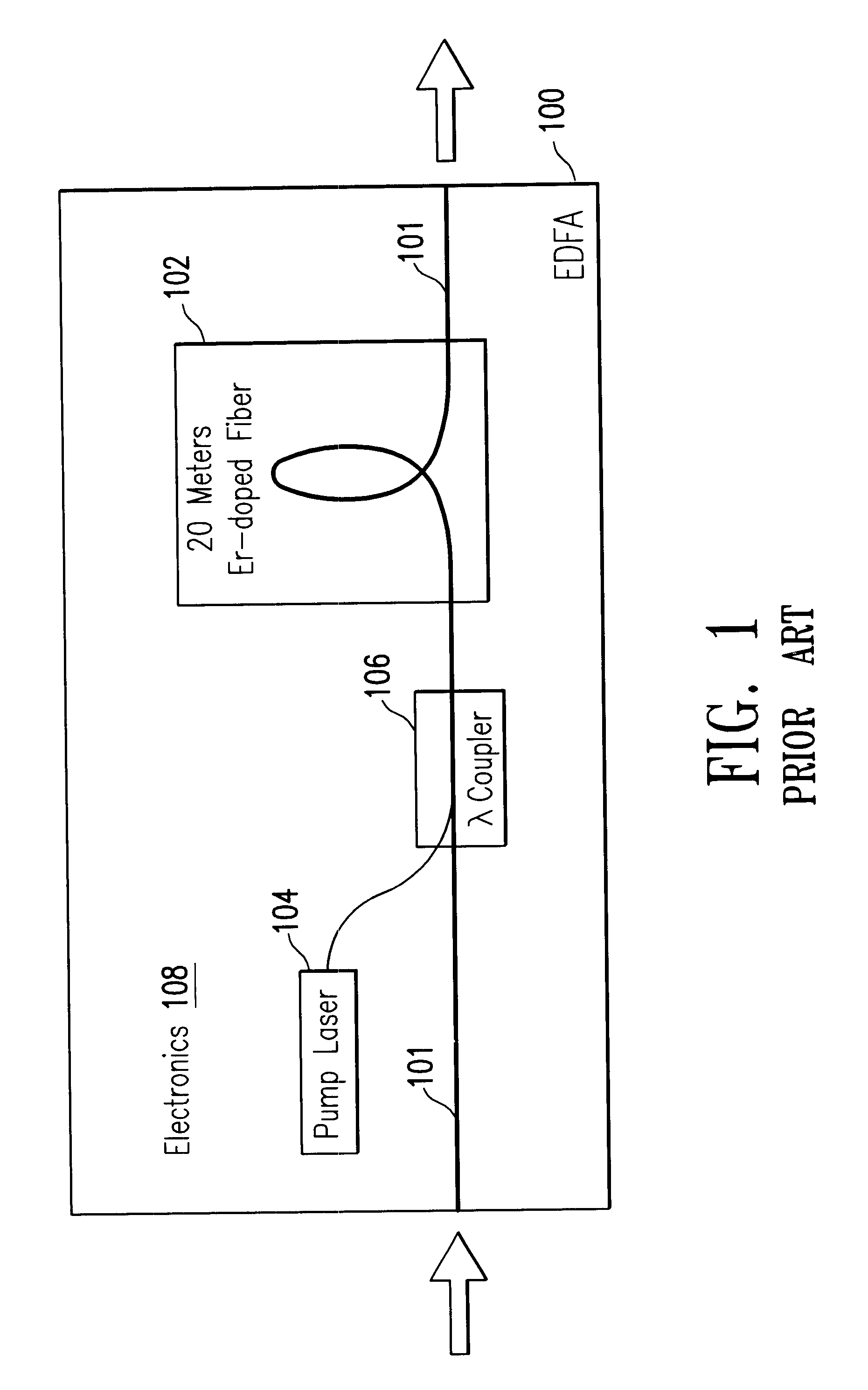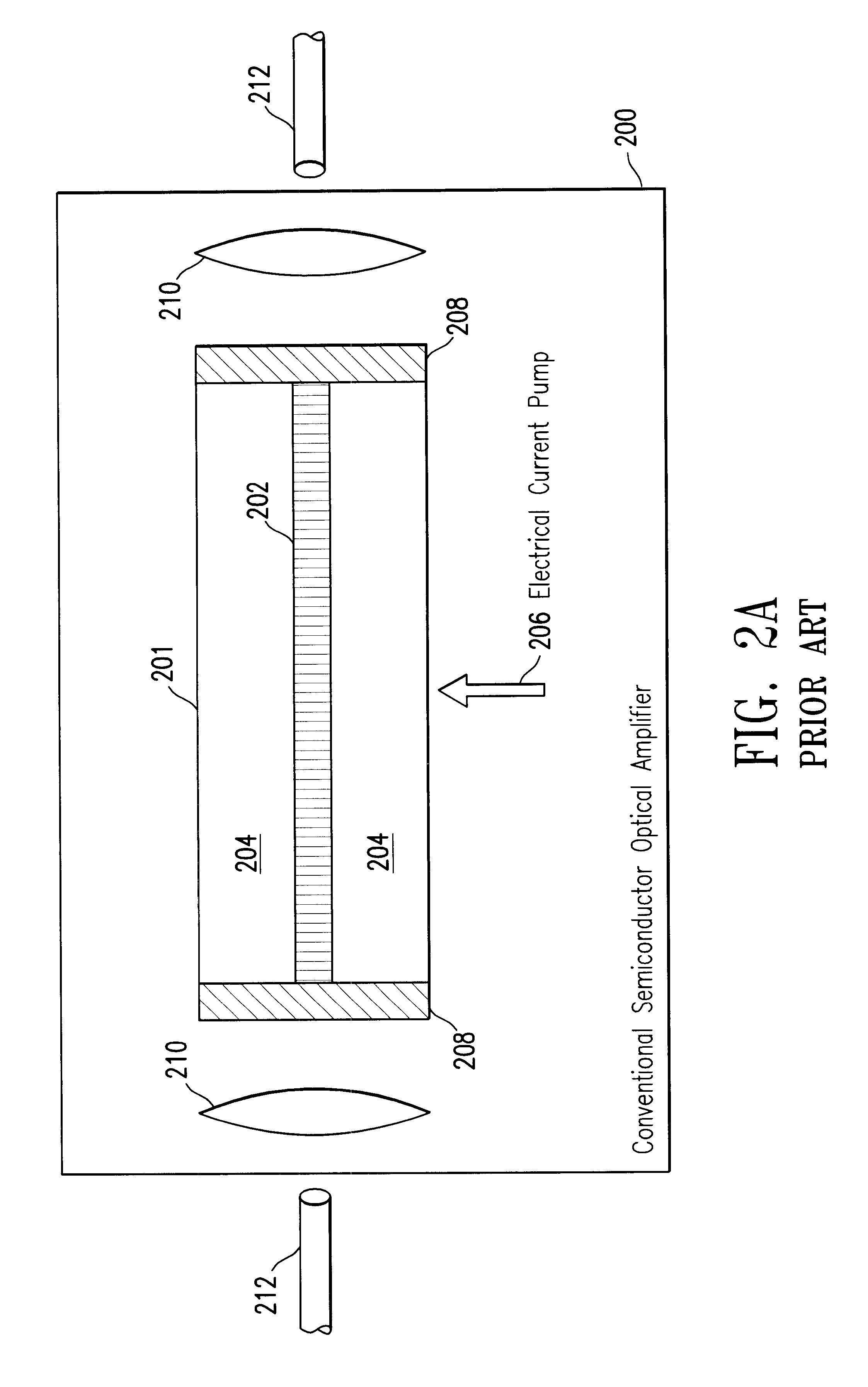Optical signal power monitor and regulator
a technology of optical signal and power monitor, which is applied in the direction of lasers, semiconductor amplifier structures, semiconductor lasers, etc., can solve the problems of attenuation of optical signals, and limited dynamic range of optical receivers
- Summary
- Abstract
- Description
- Claims
- Application Information
AI Technical Summary
Problems solved by technology
Method used
Image
Examples
Embodiment Construction
FIG. 1 is a schematic diagram of an erbium doped fiber amplifier (EDFA) 100. The EDFA 100 typically includes about 20 meters of erbium-doped fiber 102 inserted into the fiber optics. A pump laser 104 provides light to excite the ions in the erbium-doped fiber 102, and a wavelength coupler 106 couples the light from the pump laser 104 to the fiber optics 101. As discussed above, the EDFA 100 has its problems and disadvantages.
FIG. 2A is a schematic diagram of a conventional semiconductor optical amplifier (SOA) 200. The conventional SOA 200 comprises a semiconductor part 201 having an active region 202 with passive regions 204 surrounding the active region 202. The active region 202 comprises the semiconductor gain medium, and the passive regions 204 comprise wide bandgap semiconductor cladding regions. The edges of the semiconductor part 201 have antireflection coatings 208. The antireflection coatings 208 ensures that the semiconductor part 201 operates below a lasing threshold. Le...
PUM
 Login to View More
Login to View More Abstract
Description
Claims
Application Information
 Login to View More
Login to View More - R&D
- Intellectual Property
- Life Sciences
- Materials
- Tech Scout
- Unparalleled Data Quality
- Higher Quality Content
- 60% Fewer Hallucinations
Browse by: Latest US Patents, China's latest patents, Technical Efficacy Thesaurus, Application Domain, Technology Topic, Popular Technical Reports.
© 2025 PatSnap. All rights reserved.Legal|Privacy policy|Modern Slavery Act Transparency Statement|Sitemap|About US| Contact US: help@patsnap.com



